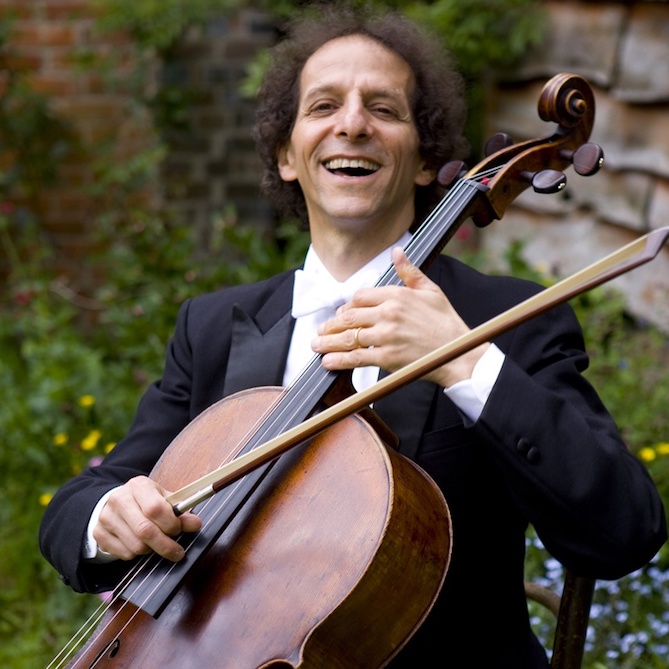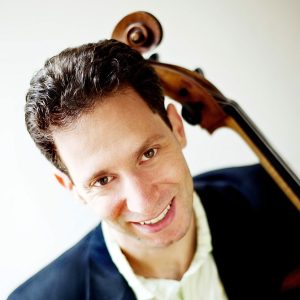
The Britten Cello Suites (Part 4): An Interview with Colin Carr
Aron Zelkowicz
Two of my favorite recordings of the Third Britten Suite are both by Colin Carr, with whom I studied during a summer in high school and then years later as a doctoral student. On both occasions I brought the Third Suite to my lessons.
You first recorded the Third Suite on an album for GM Records, “Unaccompanied Cello”, with solo works by Kodaly, Crumb, and Schuller. Was this your solo debut album?
I had a recording made as part of the Naumburg competition prize, Franck and Debussy sonatas and a few little Faure pieces, but this was my first commercial recording.
Why did you choose to include the Britten with these other works?
I wanted it to be all unaccompanied and didn’t want to play Bach. That meant a leap into the twentieth century and a choice between your project, the three Britten Suites, or a mixed bag of solo cello. I was more excited at the time by the second possibility.
Do you remember for what occasion (or circumstances) you first learned the work?
I well remember the first time I played the piece. It was in the courtyard (outdoors) of the Hotel de Ville (town hall) of Geneva in Switzerland. I used the music and there was a light breeze, which made it necessary to find clothes pegs to keep the pages from turning when I needed them. Steven Thomas, a fine cellist from Switzerland with whom I attended the Menuhin School, sat on stage with me. He was kind enough to hold on to the music and turn pages.
More recently, your live performance of the Third Suite at the Music@Menlo festival was commercially released. Have you compared your two recorded versions, or can you describe a difference in your approach to the work after all these years?
I have not heard the Menlo recording (actually I was not aware of its existence!) and the GM recording I have not heard for about twenty years so I can’t really answer the first part of the question. Regarding changes in approach, I am never conscious of change but it creeps up on you and there are surely differences with each performance. It’s a little like the growth of a child, quite unnoticeable from day to day but when the distant aunt comes to visit she is astonished!
The Menlo recording was live. It sounds like every detail was perfectly in place, yet there seems to be intensity by having an audience present. How often to you give concerts where you feel everything went so perfectly that the live version could be committed to disc? Is it rare, is that an ideal to strive for, or do you try to separate the live abandon of performance with the nitpicky work that goes on in front of microphones?
I don’t trust my judgment on these matters anymore. In general I dislike the recording process with its endless repetitions and patches and I wish recordings of live concerts were more acceptable. But we are easily fooled by the magic in the air during a live performance that magically blows away when examined in the unforgiving light of the recording the next day.
Are there any salient points you think audiences should know when hearing the piece for the first time?
This is one of those pieces that should not ever be listened to for the first time! It is a confusing puzzle but undoubtedly the listening experience could be heightened by some analysis. The compositional craft of “burying treasure” as you so eloquently put it is a source of both admiration and amusement. I chuckle each time I realize that every note of this piece is drawn from the folk songs or the Kontakion.
You’ve performed this work fairly often – what do you have against the other two suites?
I love the First Suite, I think it is a tour de force of cello composition, majestic and powerful. It is the Second that has been elusive for me thus far. I do feel a particularly intimate connection and engagement with the Third Suite, maybe the result of my mixed Russian and English blood.
The second movement has what is perhaps the largest stretch in the cello repertoire: a low A-flat unison on the bottom two strings. Are you willing, before judge and jury, to reveal your “secret” for playing that?
I don’t believe that even Rostropovich could have done that, maybe Rachmaninov! I plant my thumb on the A-flat on the G string, stretch my fourth finger as far as possible towards the A-flat on the C string (for good visual effect), do a violent string crossing motion with the bow never leaving the G string and the result is a creditable simulation of Britten’s intention.
Colin Carr’s 1995 recording of the Third Suite can be found here.
His live 2006 recording from the Menlo festival can be found here.
Subjects: Interviews, Repertoire
Tags: analysis, Aron, Bach, Benjamin Britten, Britten, cello, cello suites, cellobello, Colin Carr, composition, differences in performance, Growth, interview, live recording, live-performance, Menlo, Menuhin School, microphones, Music@Menlo, performance, recordings, Rostropovich, solo debut album, Suites, Zelkowicz
